HEPEX 2025 workshop – What happened in Tuscaloosa?
by Ilias Pechlivanidis (SMHI)
It was great celebrating the 20 years of the community in Tuscaloosa! The HEPEX 2025 workshop left us all with very positive impressions; the workshop was a great success with very interesting contributions and discussions that made both the scientists and practitioners to set new state-of-the-art in ensemble hydrological forecasting for decision-making.
More than 80 onsite participants (and about 40 online) from all around the world gathered in the beautiful city of Tuscaloosa, United States, to elaborate on a set of hydrological forecasting-related topics, including integration of sectoral needs and AI techniques across spatial scales and time horizons. Participants showcased their work in enhancing forecasts through post-processing, data assimilation, evaluation from a user-perspective, while highlighted the developments in impact-based forecasting and warning systems. Throughout the workshop, discussions around priorities and unresolved challenges in hydrological forecasting were discussed. The workshop created a space for advanced research and practical solutions to communicate, while various ideas were exchanged on the essential science and actions needed to advance the field.
In particular, the workshop featured two breakout sessions: one focused on the future direction of HEPEX, and the other on tools, resources, and skill gaps in hydrological forecasting, viewed through the lens of Early Career Scientists.
Moreover, with thanks to the Research Institute Communications of the Alabama Water Institute, Ilias Pechlivanidis, a HEPEX co-chair, was interviewed explaining what HEPEX is and why hydrological ensemble prediction is important. Listen to the podcast on one of these platforms Apple/iTunes, Spotify, Amazon, and iHeart, and don’t forget to subscribe to the Alabama Water Institute to get the next episodes!
On behalf of all HEPEX/EC-HEPEX co-chairs, special thanks go to University of Alabama and CIROH for hosting the event, the organising and scientific committee, and all presenters and participants!!
Next occasion to meet is Vienna for the EGU conference. Follow our recent EGU25 blog, register to the HEPEX dinner (Thursday 1st May) and see you soon!
Below, you can download all presentations and posters, access the Zoom recording links, and browse a selection of photos capturing highlights from the event.
Agenda
All PDFs are stored per day and session and can be downloaded HERE
| Day 1: 25th March 2025 (Tuesday) | ||
| 08.30 – 09.00 | Registration | |
| 09.00 – 09.10 | Welcoming note from The University of Alabama | Hamid Moradkhani |
| 09.10 – 09.20 | Welcoming note from the Alabama Water Institute and CIROH | Steven Burian |
| 09.20 – 09.30 | Presentation of HEPEX / EC-HEPEX and workshop aims | Ilias Pechlivanidis |
| Session 1: Meteorological advancements driving hydrological forecasts at different time scales Chair: Andy Wood & EC co-chair: Kristin Raub | ||
| 09.30 – 09.40 | Deep diffusion model-based precipitation ensemble prediction – (Online) | Wentao Li |
| 09.40 – 09.50 | Towards seamless rainfall forecasts for flood early warning in fast-responding basins – (Online) | Ruben Imhoff |
| 09.50 – 10.00 | Correcting spurious “rain bombs” (localized high rainfall) in ERA5 for improved hydrological simulations | Nikolaos Mastrantonas |
| 10.00 – 10.10 | Innovations toward enhanced ensemble streamflow predictions in NOAA’s NextGen framework | Mimi Abel |
| 10.10 – 10.20 | Open Discussion | |
| 10.20 – 10.30 | Presentation of posters (2 minutes each) – Block 1 | See list of posters |
| 10.30 – 11.00 | Coffee break / Poster display | |
| Session 2: Forecasting at different time scales addressing sectoral needs Chair: Louise Arnal & EC co-chair: Dave Casson | ||
| 11.00 – 11.30 | Keynote talk #1 HEPEX: Meeting the promise and challenges of probabilistic streamflow forecasting | Rob Hartman |
| 11.30 – 11.40 | Challenges in operational prediction of high flow events at small basin scales across United States | Felipe Quintero |
| 11.40 – 11.50 | Advancing real-time flood and drought forecasting in Germany: Insights from the IFS-mHM modeling system – (Online) | Husain Najafi |
| 11.50 – 12.00 | Hydrological forecasting in Central Asia: challenges, experiences and future needs – (Online) | Abror Gafurov |
| 12.00 – 12.10 | Improving process understanding/representation in (fast) high resolution distributed hydrological model for forecasting, climate scenarios and digital twin applications | Albrecht Weerts |
| 12.10 – 12.25 | Open Discussion | |
| 12.25 – 13.30 | Group Photo and Lunch | |
| 13.30 – 14.45 | Shaping the future of HEPEX – Breakout group discussion | |
| 14.45 – 15.00 | Presentation of posters (2 minutes each) – Block 2 | See list of posters |
| 15.00 – 15.30 | Coffee break / Poster display | |
| Session 3: Recent advances in impact-based forecasting and system evaluations Chair: Claudia Bertini & EC co-chair: Dipsikha Devi | ||
| 15.30 – 15.50 | Shaping the future of HEPEX – Reporting back from the breakout group discussions | |
| 15.50 – 16.00 | Real-time use of short-range hydrologic ensemble forecasts in the Eastern US and potential near-term improvements – (Online) | Seann Reed |
| 16.00 – 16.10 | A community protocol for short-range streamflow forecast evaluation across CONUS headwater catchments: Examples from the CIROH hydrologic prediction testbed | Josh Sturtevant |
| 16.10 – 16.20 | Advancing hydrological forecasting through multi-model evaluation of conceptual functional equivalent models and the national water model | Sifan A. Koriche |
| 16.20 – 16.30 | Open Discussion | |
| 16.30 – 16.40 | Hazard mapping framework: Generating clear and focused alerts while incorporating spatial rainfall uncertainty – (Online) | Tali Horowitz |
| 16.40 – 16.50 | Evaluating hydrologic model performance toward advancing the national water model operational forecast within the NextGen framework | Xia Feng |
| 16.50 – 17.00 | A data-driven approach for impact-based forecasting and early warnings | Akshay Singhal |
| 17.00 – 17.10 | Integrating social and physical aspects for advanced flood impact forecasting: A transdisciplinary and co-production effort | Emixi Valdez |
| 17.10 – 17.20 | Open Discussion | |
| 17.20 – 19.00 | Free time | |
| 19.00 – 22.00 | Dinner | |
| Day 2: 26th March 2025 (Wednesday) | ||
| Session 4: Novelties in probabilistic modelling, prediction, uncertainty quantification and communication Chair: Hamid Moradkhani & EC co-chair: Emixi Valdez | ||
| 09.00 – 09.10 | Probabilistic predictions across large geographical domains | Martyn Clark |
| 09.10 – 09.20 | Dynamic combination of a multi-model ensemble for improved streamflow prediction | Cyril Thébault |
| 09.20 – 09.30 | Assessing the seasonal forecastability of harmful algal blooms in Lake Champlain | Rakhshinda Bano |
| 09.30 – 09.40 | Hydrologic ensemble data assimilation for the Next Generation Water Resource Modeling Framework (NextGen) | Ehsan Foroumandi |
| 09.40 – 09.50 | 2D probabilistic flood forecasting with Torrent: A Lagrangian rivulet-based approach – (Online) | Brent Daniel |
| 09.50 – 10.00 | Using science communication and user-centric strategies to improve hydrologic science dissemination | Lakelyn Taylor |
| 10.00 – 10.15 | Open Discussion | |
| 10.15 – 10.30 | Presentation of posters (2 minutes each) – Block 3 | See list of posters |
| 10.30 – 11.00 | Coffee break / Poster display | |
| Session 5: Enhancing early warnings and hydro-climate services Chair: Matt Womble and Micha Werner & EC co-chair: Fatemeh Rezaei Aderyani | ||
| 11.00 – 11.30 | Keynote talk #2 Global Efforts to Enhance Hydrologic Forecasting – (Online) | Stefan Uhlenbrook and Hwirin Kim |
| 11.30 – 11.40 | Lessons for service delivery: Increasing the utility and accessibility of the National Water Model for capacity limited end users | Kristin Raub |
| 11.40 – 11.50 | Improving operational ensemble hydrologic forecasting in the USA with NextGen capabilities | Louise Arnal |
| 11.50 – 12.00 | Seasonal streamflow predictions with a fully coupled Global Climate Model | Gabriel Narvaez-Campo |
| 12.00 – 12.10 | Decision-timelines: A participatory tool to help understand the decisions users take and value hydrological (ensemble) predictions | Micha Werner |
| 12.10 – 12.20 | Strategic innovations in research-to-operations hydrological forecasting: Enhancing value across spatial scales and time horizons | Ilias Pechlivanidis |
| 12.20 – 12.30 | Open Discussion | |
| 12.30 – 13.30 | Lunch | |
| 13.30 – 13.40 | The integrating prediction of precipitation and hydrology for early actions (InPRHA) project at WWRP WMO and how the HEPEX community can contribute to it – (Online) | Rachel Carr |
| 13.40 – 13.50 | 20-Year of Global Flash Flood Guidance – lessons learned and way forward. | Theresa Hansen |
| 13.50 – 14.00 | Delft-FEWS and HEPEX: Celebrating 20 years of synergy and success | Albrecht Weerts |
| 14.00 – 14.10 | A look back into 20 years after introducing ensemble predictions for flood warning | Maria-Helena Ramos |
| 14.10 – 14.20 | Advancing hydrological research through the WMO Research Board Task Team on Hydrology Research | Ilias Pechlivanidis |
| 14.20 – 14.30 | Open Discussion | |
| 14.30 – 18.30 | Field visit – Moundville Archeological Park | |
| 18.30 – 19.30 | Free time | |
| 19.30 – 22.00 | Dinner | |
| Day 3: 27th March 2025 (Thursday) | ||
| Session 6: AI-enhanced hydrological forecasting across time horizons Chair: Ilias Pechlivanidis & EC co-chair: Emma Golub | ||
| 09.00 – 09.30 | Keynote talk #3 ML advances, from theory to applications to operations, improved predictions and understanding our physical world | Jonathan Frame |
| 09.30 – 09.40 | Machine-Learning-aided forecasting of drought-related extremes (MaLeFiX) – (Online) | Massimiliano Zappa |
| 09.40 – 09.50 | ML-based regionalization for enhanced hydrological modeling in ungauged basins – (Online) | Yiheng Du |
| 09.50 – 10.00 | Optimizing regional hydrological forecasting with AI-driven ensemble learning: Lessons from rainfall-runoff modeling – (Online) | Farzad Hosseini |
| 10.00 – 10.10 | Exploring hybrid forecasting frameworks for subseasonal low flow predictions in the European Alps – (Online) | Annie Chang |
| 10.10 – 10.25 | Open Discussion | |
| 10.25 – 10.40 | Presentation of posters (2 minutes each) – Block 4 | See list of posters |
| 10.40 – 11.10 | Coffee break / Poster display | |
| Session 7: Advances in using probabilistic predictions for risk-based decision-making Chair: Nathalie Voisin & EC co-chair: Bahareh Karimidermani | ||
| 11.10 – 11.20 | Using Gradient Boosting Regressor to Quantify the Impact of Snow Water Equivalent on Spring-Summer Water Supply Forecasts in the Western U.S. | Haowen Yue |
| 11.20 – 11.30 | AI-based seasonal streamflow forecasts for Europe | Claudia Bertini |
| 11.30 – 11.40 | Leveraging AI to identify extreme hurricane flood scenarios | Karthik Balaguru |
| 11.40 – 11.50 | Enhancing Risk-Based Decision Making and Disaster Preparedness through High-Resolution and Impact-Based Flood Early Warning Systems – (Online) | Husain Najafi |
| 11.50 – 12.00 | Open Discussion | |
| 12.00 – 12.10 | Supporting Forecast Informed Reservoir Operation Studies Through Hydrologic Ensemble Hindcasting (HEFS) – (Online) | Brett Whitin |
| 12.10 – 12.20 | Advancements and prospects in probabilistic forecasting: some perspective from CNR – (Online) | Laurie Caillouet |
| 12.20 – 12.30 | An Ensemble Hydrological Prediction System for Water Management in the US Pacific Northwest | Andy Wood |
| 12.30 – 12.40 | Evaluating a Decade of Progress: Characterizing Improvements in Hydrologic Ensemble Forecast Service (HEFS) Skill in the Western US | Madeline Allen |
| 12.40 – 12.50 | Open Discussion | |
| 12.50 – 13.05 | Presentation of posters (2 minutes each) – Block 5 | See list of posters |
| 13.05 – 14.00 | Lunch | |
| Session 8: Forecast advances to support reservoir and infrastructure operations Chair: Steven Burian & EC co-chair: Nasrin Fathollahzadeh Attar | ||
| 14.00 – 14.10 | Russian River Forecast Informed Reservoir Operations – (Online) | Chris Delaney |
| 14.10 – 14.20 | Enhancing hydrological ensemble forecasting for Uruguay’s electric system simulator – (Online) | Alejandra De Vera |
| 14.20 – 14.30 | Synthetic ensemble forecasts: development, operational evaluation, and inter-model comparison for stylized reservoir systems across California | Zach Brodeur |
| 14.30 – 14.40 | Advances in developing business cases and value streams for hydro-climate services dedicated to the power grid | Nathalie Voisin |
| 14.40 – 14.50 | Hydropower Scheduling Oriented Inflow Forecast Evaluation for Great River Hydro | Cameron Bracken |
| 14.50 – 15.00 | Open Discussion | |
| 15.00 – 15.30 | Coffee break / Poster display | |
| 15.30 – 16.30 | Early Career Panel: Discussion on tools, resources, and skill gaps in hydrological forecasting | |
| 16.30 – 17.00 | Closing of the workshop – Ideas for the next HEPEX workshop | |
| 17.00 – 19.00 | Free time | |
| 19.00 – 22.00 | Dinner | |
| List of Posters | ||
| # | Title | Presenter |
| Block 1 (Day 1) | Potential of two Statistical Post Processing Techniques in Improving Predictive Skills of Heavy Rainfall – Case Studies over Texas and California | Nasrin Fathollahzadeh Attar |
| Optimizing Groundwater Management in Coastal Alabama: A Multi-Objective Approach for Mitigating Seawater Intrusion | Olaoluwa Oluwaniyi | |
| Predicting Seawater Intrusion in Baldwin County, Alabama: Impact of Storm Surges and Human Activities Using Physical and Machine Learning Models | Hossein Gholizadeh | |
| Ensemble-Based Forecasting of cyanoHABs: Challenges and Opportunities Using an Integrated Early Warning System in Northeastern Lake Champlain | Panagiotis Oikonomou | |
| Block 2 (Day 1) | Performance of Rain-on-Snow Flood Forecasts from Two Operational Hydrologic Models During the 2022 Montana Floods | Siwei He |
| Integrating Operational Forecast Products for Probabilistic Flood Inundation Mapping in Compound Flood Event | Francisco Gomez | |
| fimserve: A Python Package for Operational Flood Inundation Mapping across CONtiguous United States | Anupal Baruah | |
| A Python-Based Automated Framework for Evaluating Flood Inundation Mapping Predictions Across Diverse Benchmark Datasets | Dipsikha Devi | |
| Toward Robust Evaluations of Flood Inundation Predictions Using Remote Sensing Derived Benchmark Maps | Sagy Cohen | |
| Block 3 (Day 2) | Socio-Hydrological Vulnerability and the Role of Radar Coverage in Flood Risk Management | Mohamed Abdelkader |
| Integrating SUMMA and Evolutionary Particle Filter Data Assimilation for Enhanced Streamflow Forecasting | Fatemeh Rezaei Aderyani | |
| The role of Hyperparameter Optimization in Data Assimilation for Uncertainty-Aware Hydrologic Forecasting | Ali Takallou | |
| Predicting flow and transport in heterogeneous geological media using fractional calculus: A review and future perspectives | Yong Zhang | |
| Groundwater Drought Monitoring using Data Assimilation | Parnian Ghaneei | |
| Block 4 (Day 3) | Assessing the effectiveness of flood forecasts and warnings in small, ungauged basins impacted by Hurricane Helene | Katie van Werkhoven |
| Decision Calendars and Open FEWS Development to Advance Cold Regions Research to Operations | Dave Casson | |
| Assessing Water Resource Vulnerability to Human Activity and Climate Change in Alabama’s Gulf Coastal Plain: An Integrated Modeling Study | Md Riad Arefin | |
| Enhancing hydroclimatic projections in Southern Quebec with multiple hydrological models | Louise Arnal | |
| Analyzing the June 2024 Flood Event in Northwest Iowa: Challenges and Opportunities for Improved Warning Lead Times | Humberto Vergara | |
| Using Remote Sensing of Glacial Lake Outburst to Improve Downstream Flood Prediction | Qiuhong Tang | |
| Block 5 (Day 3) | Enhancing Flood Forecasting Using Time Generative Adversarial Network | Ali Sattari |
| Coupling Artificial Intelligence Methods to Provide Robust but Flexible Enhancements to Ensemble Streamflow Prediction for Extreme Events | Taylor Dixon | |
| Machine Learning-Based Analysis of Surface Water-Groundwater Interactions and Nitrate Dynamics Under Variable Hydroclimatic Conditions | Bahareh Karimidermani | |
| Niagara Hydroelectric Production System (NHPS) | Arnejan van Loenen | |
| A Generative AI Framework for Probabilistic Blending of Multi-source Hydrometeorological Datasets | Nischal Karki | |
| Understanding the dynamics of hydrologic risk to distributed stormwater infrastructure | Omar Wani | |
The Zoom recordings links are available below:
Day 1 (25 March): [HERE] Passcode: 9ujxz*pP
Day 2 (26 March): [HERE] Passcode: +u1Md3=y
Day 3 (27 March): [HERE] Passcode: +xLGFq6s
Finally, below a “representative 10-member ensemble” of photos!
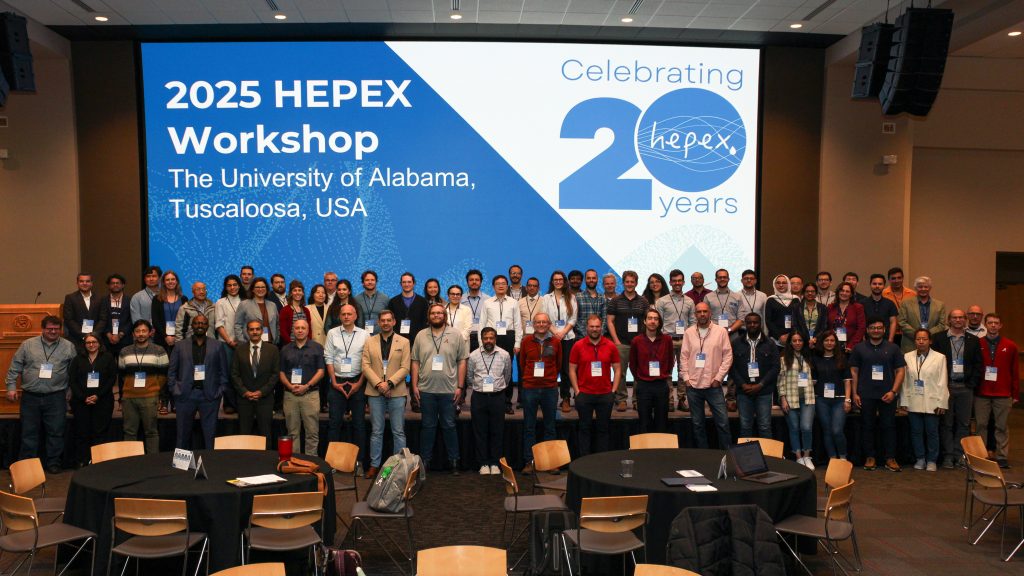
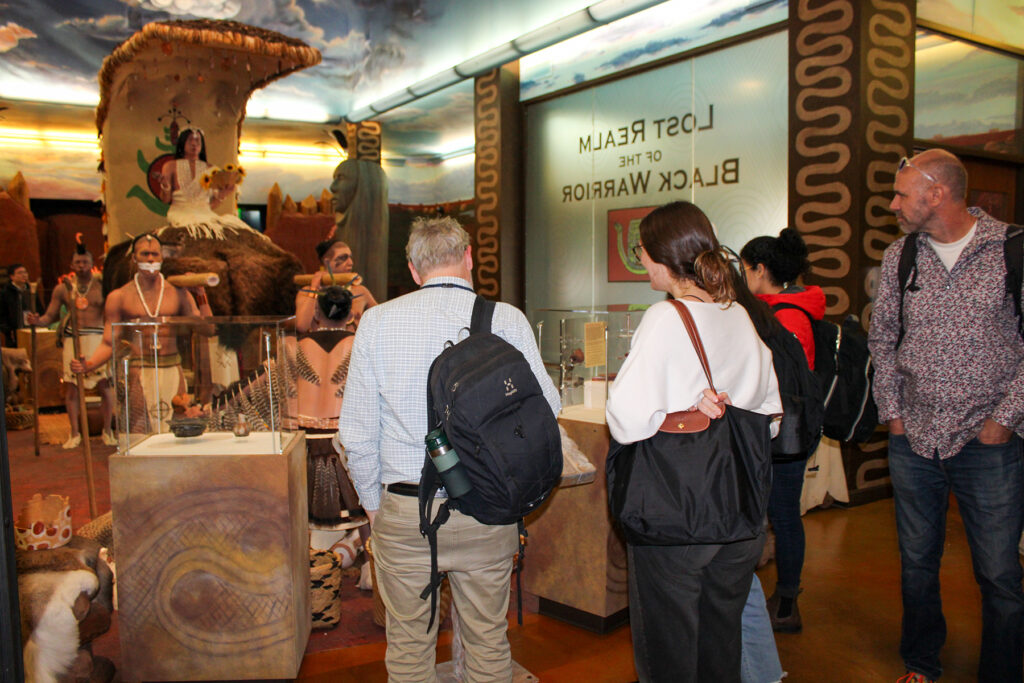
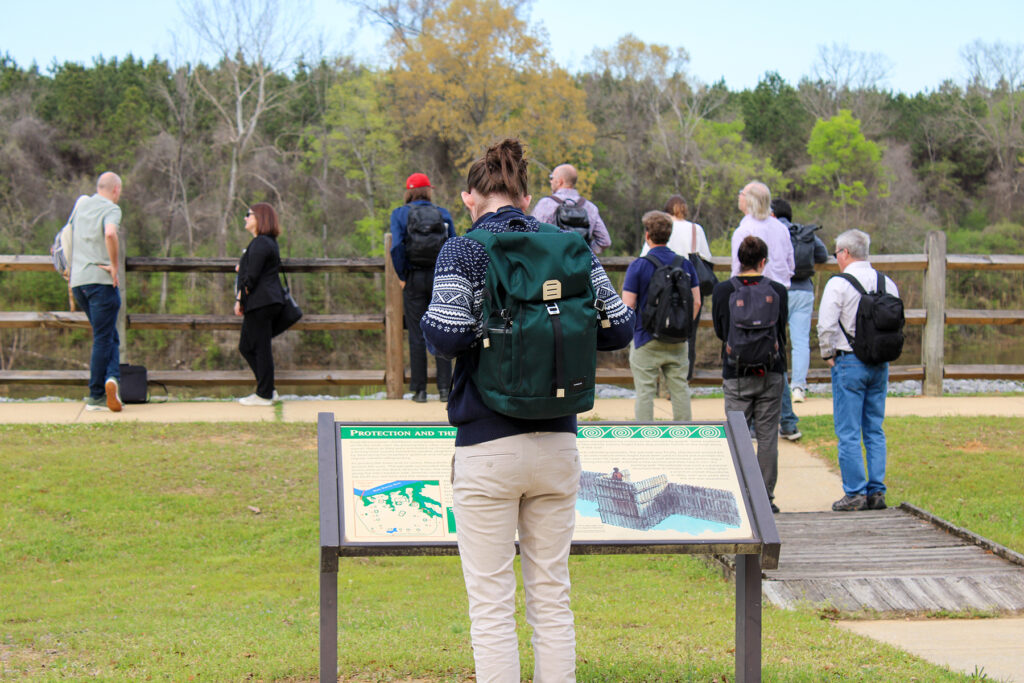
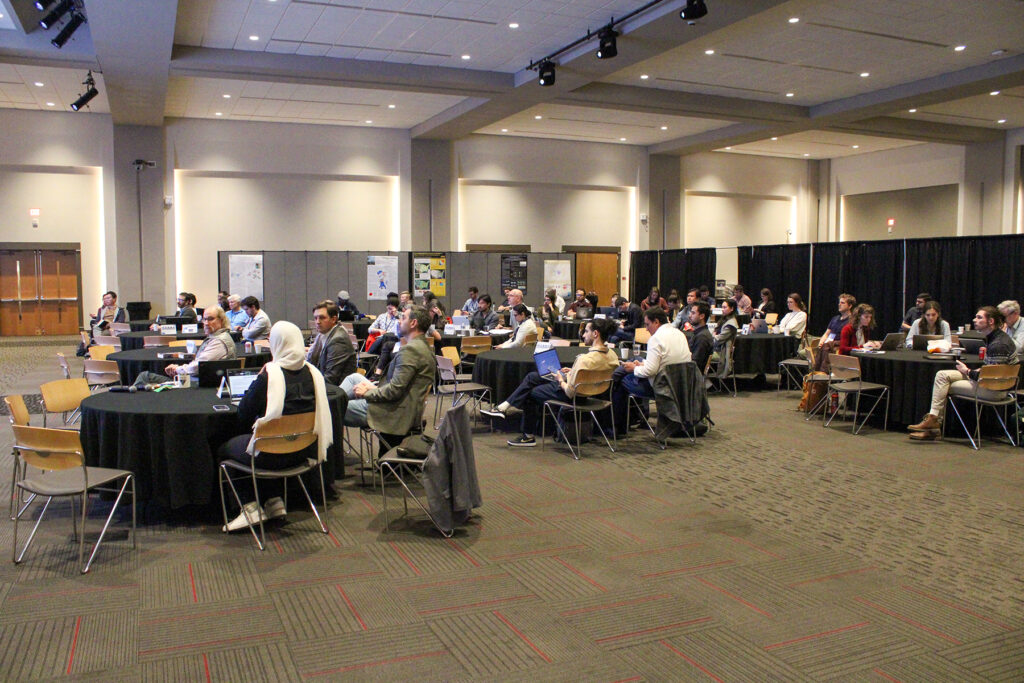
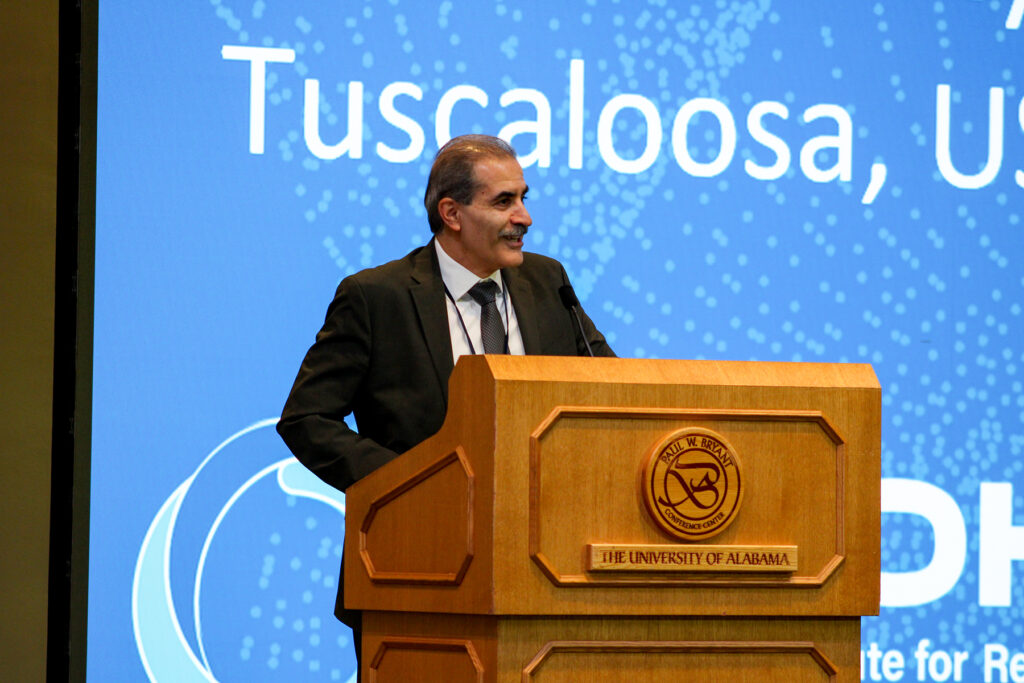
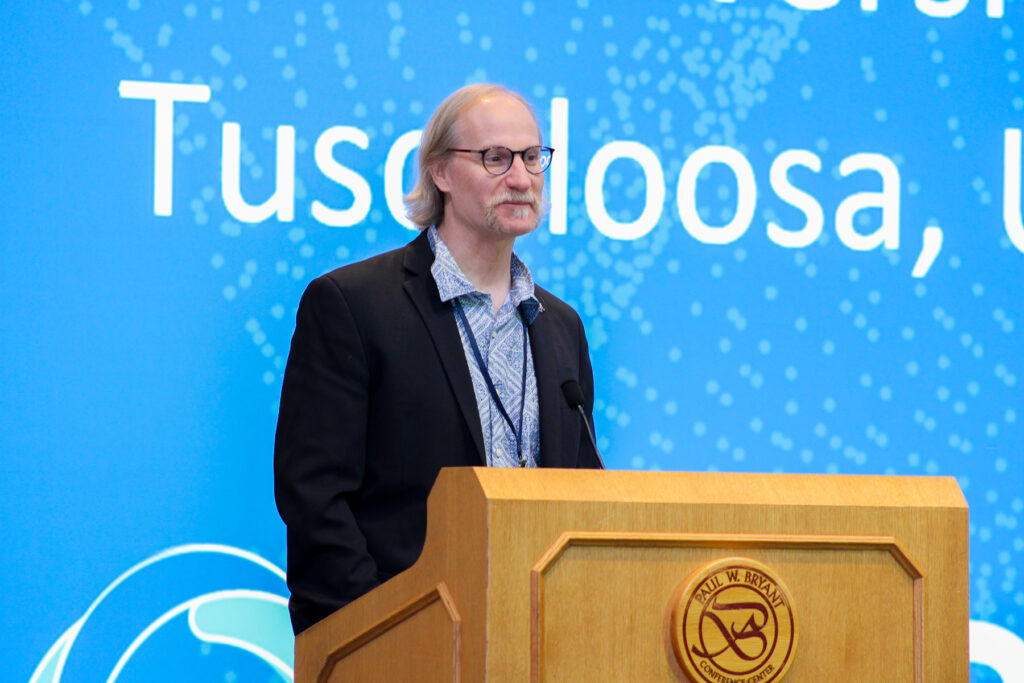
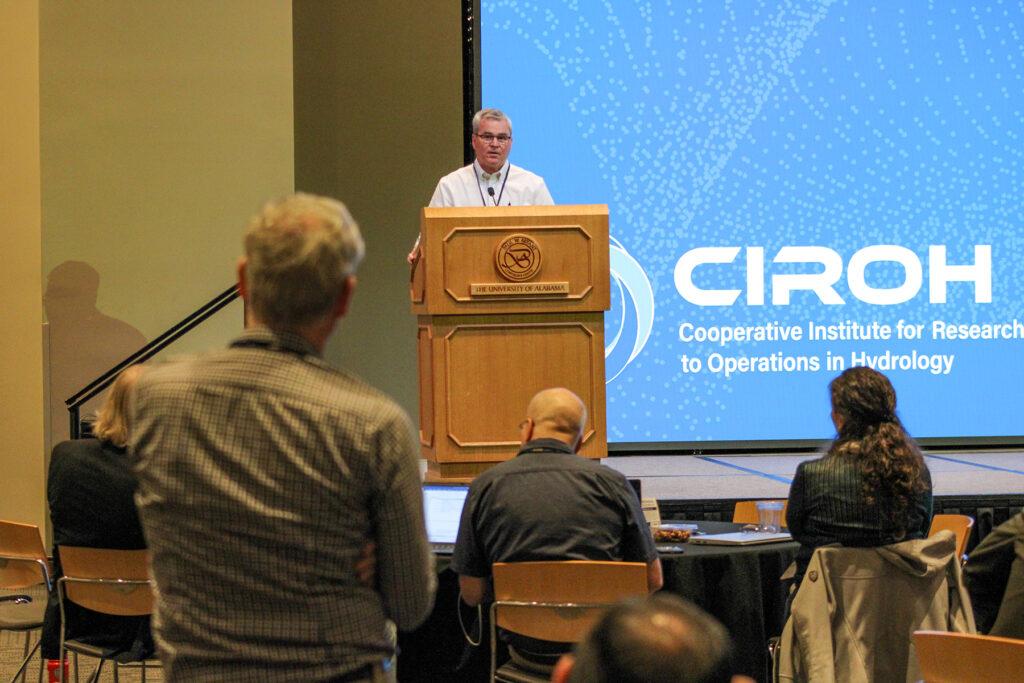
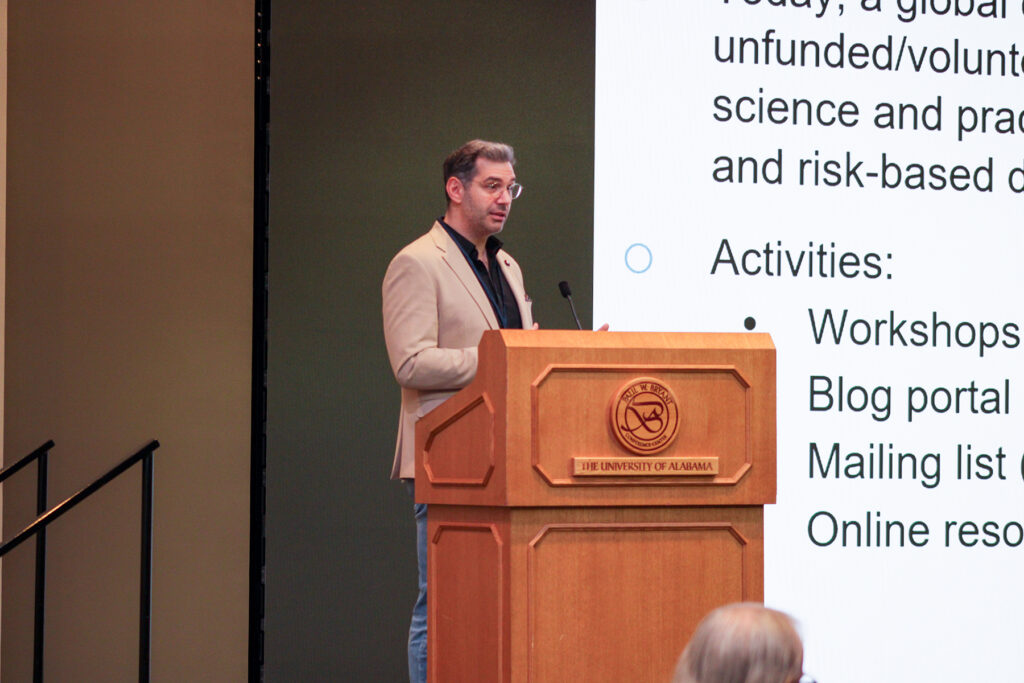
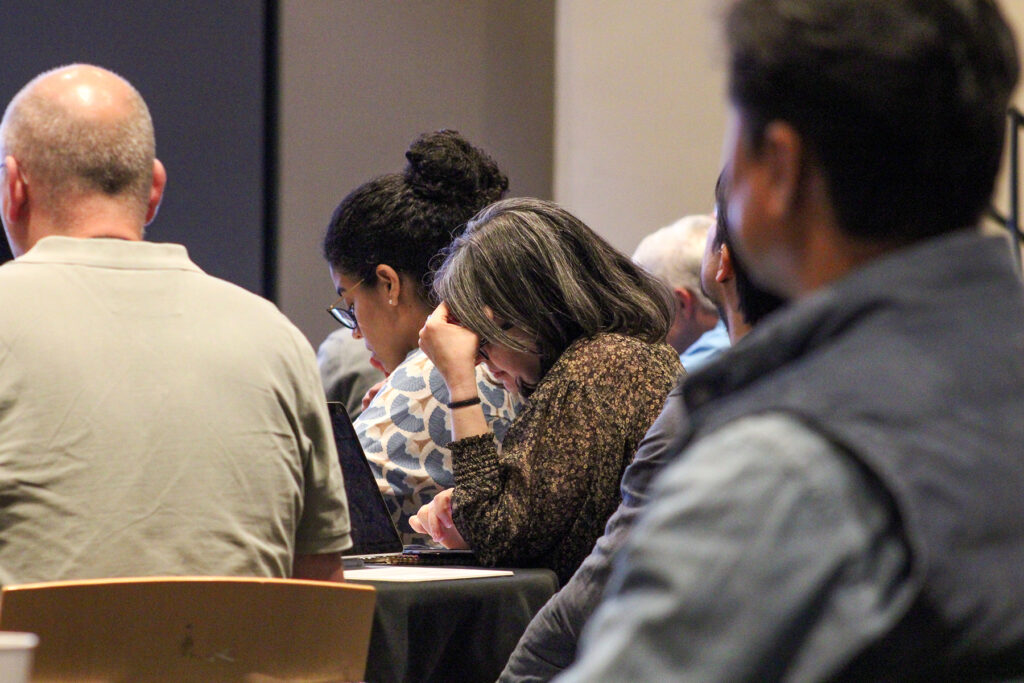
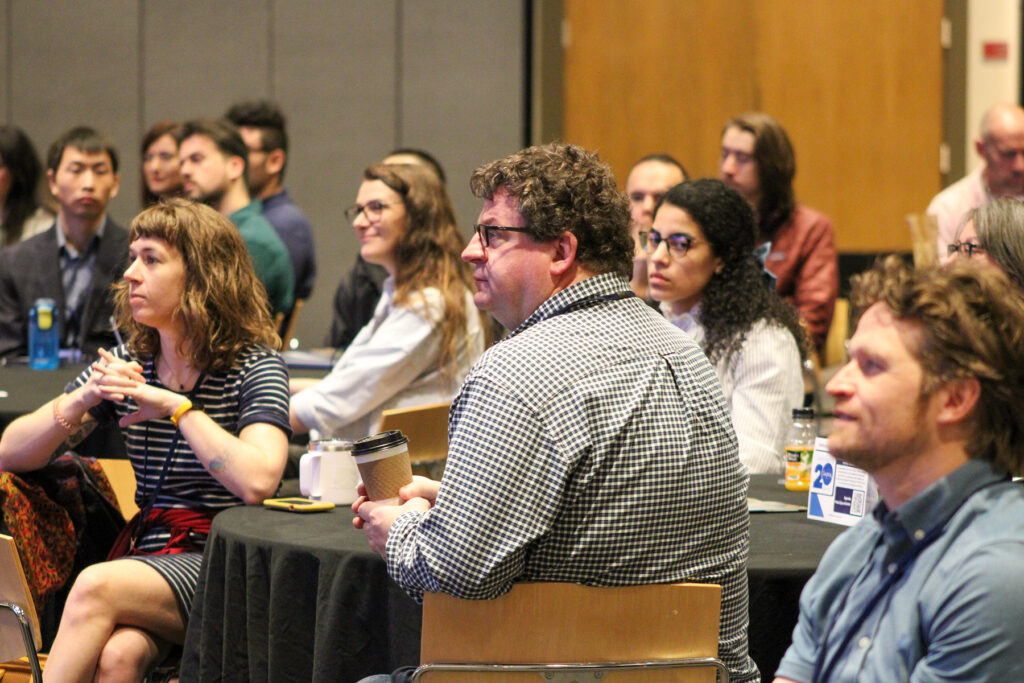
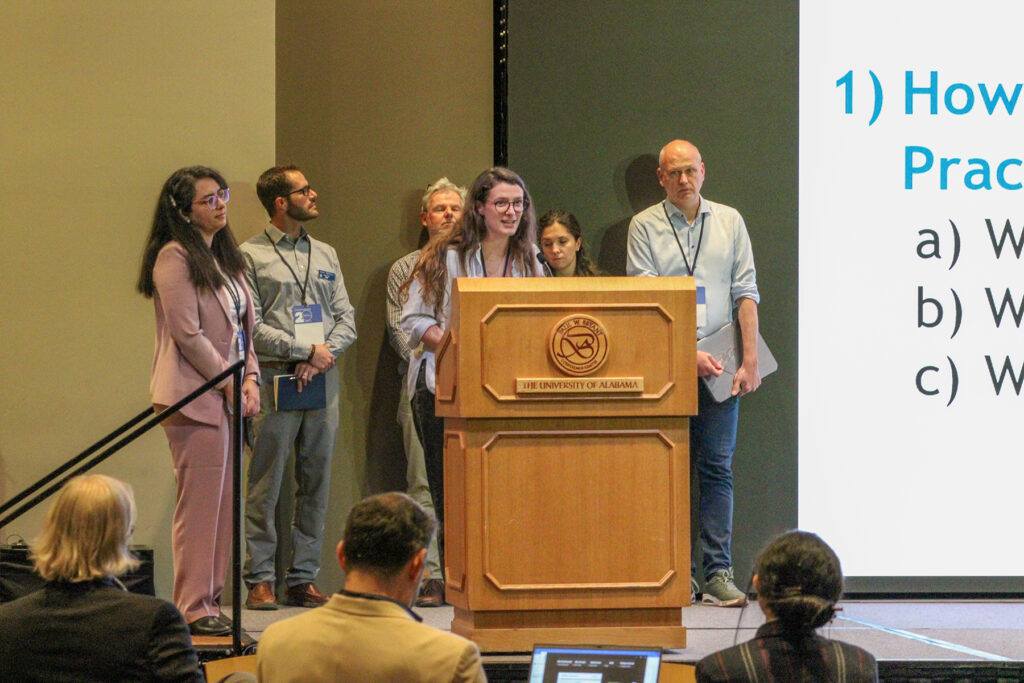
0 comments